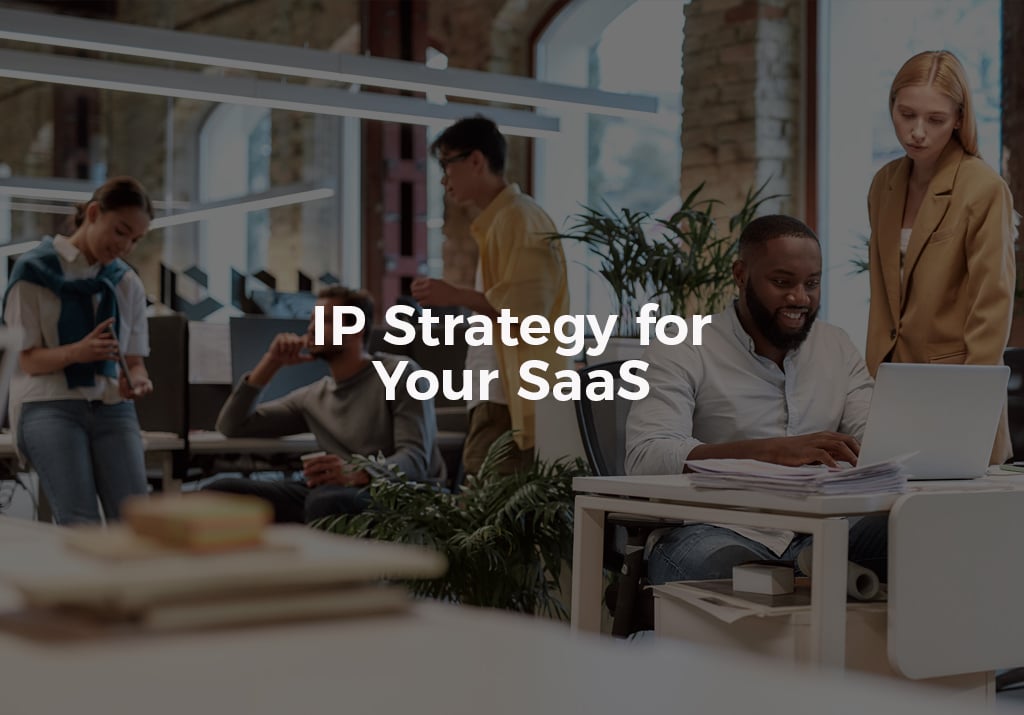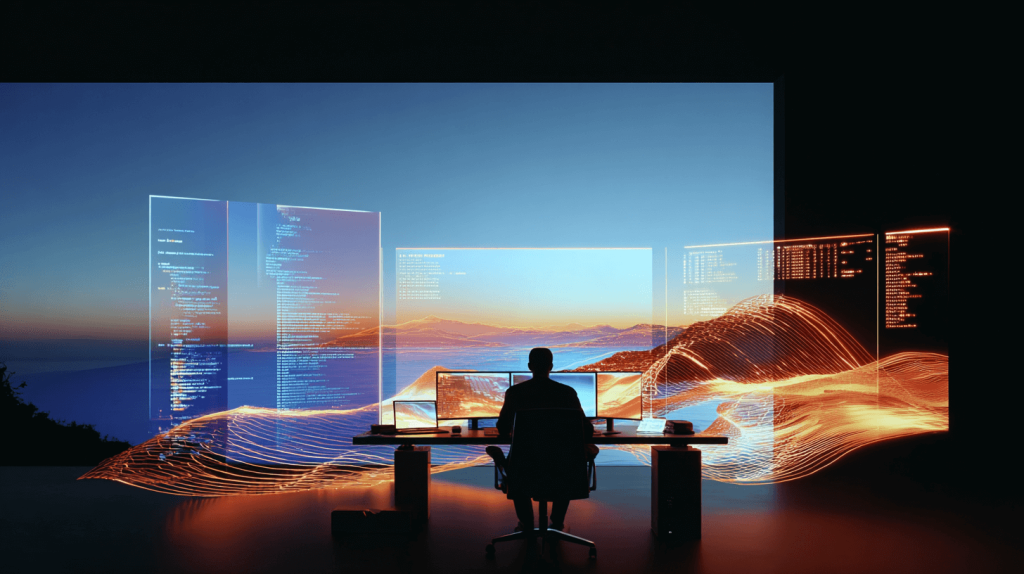It’s no secret that developing a SaaS product can be very costly. After reviewing 73 publicly traded SaaS companies, it was determined that roughly 25% of revenue and a median amount of $96 million went toward research and development. This means you need to take the appropriate measures to protect your intellectual property and investment in R&D, or risk having your hard work copied by a competitor looking to gain an edge.
This guide will help you learn about the different elements that should be considered as a part of your IP strategy for your SaaS and take action by creating a plan to protect your innovative features.
Types of Intellectual Property SaaS Founders Should Focus On
Several types of IP protection can benefit a SaaS startup. Some of them protect the specific features of your software, others will protect the code, and others will protect your branding.
Utility Patents
To be patent-eligible, your software needs to perform features that are novel and proprietary. Since code itself isn’t patentable, the patent application must be directed to the process of execution of the software code on a computer. This is commonly referred to as a “software-implemented invention.” In addition, the software-implemented invention must also be novel, and non-obvious compared to what is already known in the relevant art. You can’t obtain a patent on a software-implemented invention if the software already exists in the world.
Many software patent applications get rejected because they are considered abstract ideas, which cannot be patented. A skilled patent attorney can help you identify which key features are patent-eligible, then will likely recommend a comprehensive prior art search to determine if similar patents already exist.
If the search yields no existing prior-art, you may be in a good position to file a patent application to protect your IP. You must act quickly though, as the US follows a strict first-to-file system.
If your software is still in development, a provisional patent application can give you priority, allowing you to hold your place in line while you continue to develop and refine your software.
Design Patents for GUI
The GUI of an app is a critical piece of intellectual property, and developers should seriously consider protecting the GUI with a design patent. Design patents are directed to protecting ornamental aspects of a functional invention.
There are five requirements for what makes a GUI eligible for protection by design patent:
- The GUI Must Be an Article of Manufacture. A man-made tangible object that features a picture or design is an article of manufacture – a picture or design standing alone is not an article of manufacture. As such, a GUI, by itself, is not eligible subject matter for a design patent as an article of manufacture. However, when the GUI is placed on a computer or mobile device display, then the GUI can be protected by design a patent because it is associated with a man-made tangible object (e.g., the computer or mobile device display).
- The GUI Must Be Original. The GUI design must be original and not a copy of another’s work and innovation. Note that this is applicable even if the original designer is not aware that his or her creation was copied. On the other hand, a reassembling or reforming of a previous creation does not run afoul of the originality requirement for design patents.
- The GUI Must Be Novel. The GUI design that is being patented must be new. As mentioned, a design patent is only for the ornamental aspect of the GUI and is not going to provide protection for the mechanics of the GUl’s functionality. Protection for the mechanics of the GUl’s functionality would require a utility patent.
- The GUI Must Not Be Obvious. As technology is almost always based upon a previous innovation, the new GUI must not be obvious to other designers of ordinary skill in the art in light of what already exists in the world.
- The GUI Design Must Be Ornamental. Courts construe the ornamentality requirement of design patent eligibility to mean that the ornamental aspect of the GUI cannot be connected to the GUl’s functionality. If a certain design is required for functionality, then it cannot satisfy the ornamentality requirement. Basically, the ornamental aspect of the GUI must be entirely separate and non-dependent on the functionality of the GUI.
- Therefore, when creating a GUI, it is preferable to protect the innovative, new interface with design patent protection, provided that all requirements discussed above are satisfied. As computer GUl’s become more user friendly, the role of patents, especially design patents, will continue to be more important.
Therefore, when creating a GUI, it is preferable to protect the innovative, new interface with design patent protection, provided that all requirements discussed above are satisfied. As computer GUls become more user friendly, the role of patents, especially design patents, will continue to be more and more important.
Trademarks
A trademark is any mark that distinguishes your company from other companies. This could be a slogan, an image, logo, or name. It could even be a specific color or sound.
Securing a trademark doesn’t directly protect your software, but it does protect your brand associated with it. Your trademark protection will last for as long as you file your renewal documents and continue to use the mark with your SaaS product.
Copyright
Obtaining copyright registration to protect software code may be a good strategy for a SaaS startup. Copyrights protect the expression of an idea, i.e., how the code is written. By registering software code for copyright protection, others are prohibited from copying the protected code.
A copyright exists when the creator “fixes it in a tangible medium,” which means the instant it is written. In practice, using this as a means of protection from copyright infringement is not a realistic tool because it is difficult to prove when the code was created – even if you have timestamped “save” data to prove when wrote the code. Registering the code with U.S. Copyright Office entitles the copyright holder to certain benefits, such as statutory damages if the copyright holder ever needs to sue someone for copyright infringement.
The SaaS market is huge and those who create software need protection. However, copyright only protects against exact replication – it does not protect against similarities or “workarounds.“
Patents are a much stronger form of IP protection when possible, as they protect the underlying processes behind the features and not just the exact source code.
Trade Secrets
If your SaaS is difficult to reverse engineer, then it may be smart to keep your software hidden as a trade secret. This protection lasts forever as long as the information stays secret. Once disclosed, intentional or not, then you no longer have trade secret protection.
Why IP Is Important for Startups
One of the biggest factors that influence the value of your SaaS startup is the amount of unique and proprietary technology. If you don’t have anything unique, then you don’t have the edge over the competition.
If a company owns valuable intellectual property, this gives them a competitive advantage, and they could be acquired by a larger company seeking their solution.
Having IP protections in place makes it easier to show potential investors that you have a unique product and that you’ve taken the necessary steps to protect it.
Developing an IP Strategy for Your SaaS
Whether you’re just beginning your SaaS development or almost complete, you should be thinking about protecting your hard work and valuable IP. Knowing the different IP tools available helps you protect not only your work but also your future earning potential and the value of your software product.
Contact our attorneys today for a free consultation and let our team help you develop an IP strategy for your SaaS company.



